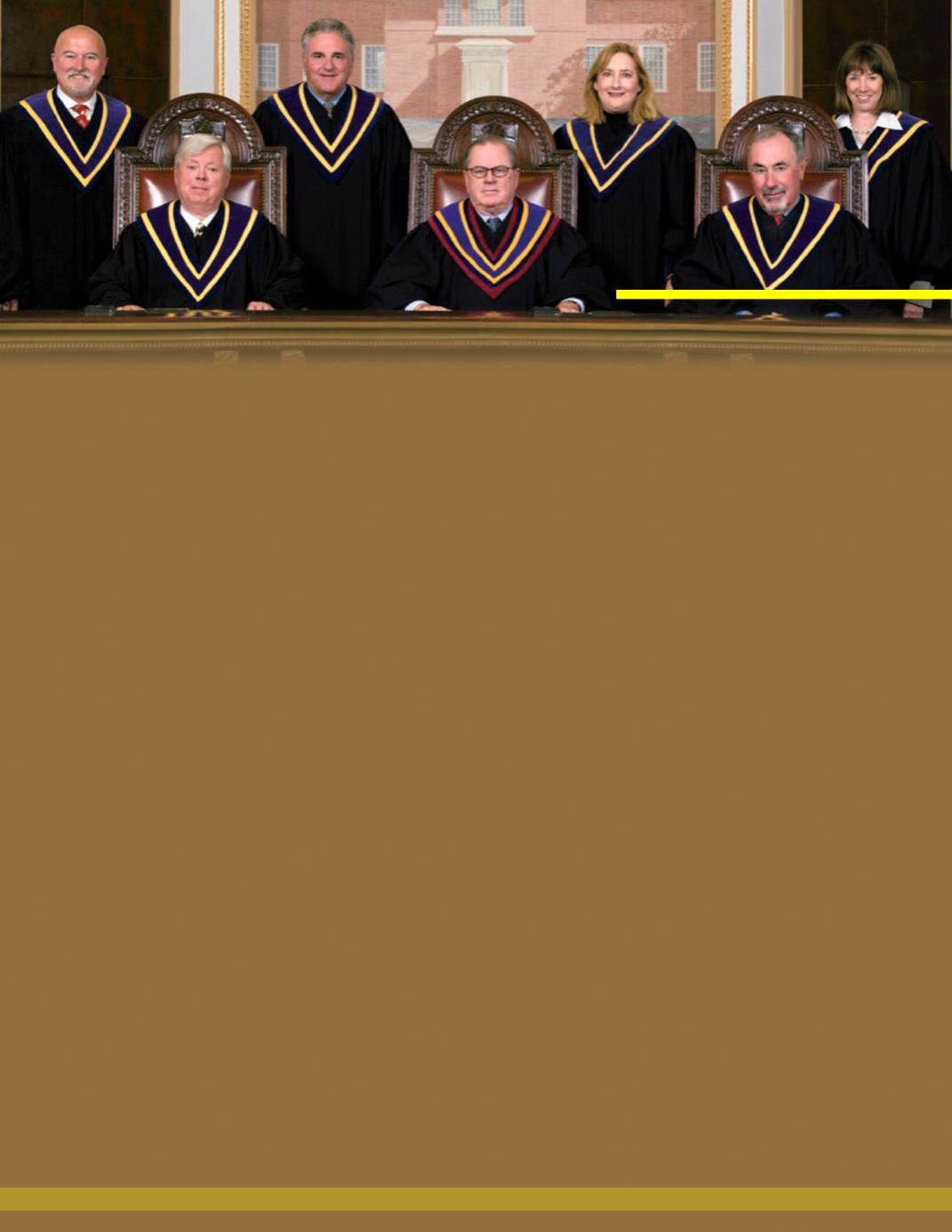
State Judicial Branch
The
judicial
branch of our state government
includes the court system, which is operated by our
Judges. Judges interpret and apply our laws, and
explain what lawsmean when they are questioned.
Themain duty of the court system is to decide
whether someone has broken a law, and what
punishment to apply when someone is convicted of a
crime. The judicial branch also deals with
disagreements among agencies, people, and
businesses within the state.
Our
State Supreme Court
was established in
1722, making it the oldest in the country. The State
Supreme Court supervises all statewide courts, the
Common Pleas Courts at the county level, and the
District Justices at the local level.
There are three different statewide courts – the
State Supreme Court, the
Superior Court
, and the
Commonwealth Court
. These courts hear or review
cases that are not settled or are
appealed
from the
lower county and local courts. There are no juries in
statewide court cases. Lawyers present their cases to
a panel of judges whomake decisions on a simple
majority rule.
The Supreme Court consists of seven judges who
are elected to 10-year terms. The judges on the State
Supreme Court pick the cases they think aremost
important. They listen to all cases involving the
interpretation of our state constitution.
The Superior Court consists of 15 judges who are
elected to 10-year terms. In panels of three judges,
they hear appeals on criminal and civil cases
appealed from the lower Common Pleas Courts. Most
appeals go no further unless selected by the Supreme
Court judges.
The Commonwealth Court consists of nine judges
who are elected to 10-year terms. They review all cases
brought against the state government. The judges listen
to cases about state and local matters concerning
issues such as banking, insurance, and taxes.
Each county seat in our state has a
Common
Pleas Court
. Judges are elected to 10 year terms.
Judges of the Common Pleas Court handle cases
involving all types of criminal and non-criminal, or civil,
cases whichmay include disagreements between two
parties over contracts, property disputes, divorces,
and so on. Many of the court cases in our judicial
systemdo not go beyond the county level.
There are 546
District Justices
who are elected
to six-year terms in our state. These judges interpret
laws at the city, township, and borough levels. They
can issue warrants for arrests of suspects, issue
search warrants, and can hold hearings to decide if a
case goes to the Common Pleas Court. They can also
administer and collect fines for certain actions which
are considered illegal, such as littering or speeding on
our highways. Because of their sizes, Philadelphia and
Pittsburgh have their own court systems, but they still
operate under the rules of the judicial system.
L
ET
’
S
R
EVIEW
1. Identify onemain difference between our state and national Constitutions.
2. Name two ways Pennsylvania’s Constitution served as amodel for our national Constitution.
3.What is themain function of our state’s legislative branch of government?
4. A. Identify the twomain chambers of our state legislative branch.
B. What is the name given when both chambersmeet together?
5. Outline the procedures by which a bill becomes a law.
6. Identify each occupation within our state’s legislative branch.
7. Describe themain functions of our state’s executive branch of government.
8. Identify at least fivemajor occupations within our state executive branch.
9. Describe themain roles of our state’s judicial branch of government.
10. Identify and describe the functions of the five different kinds of courts in our state.
Pennsylvania State Supreme Court judges
sit on the highest bench in Pennsylvania.
Our State Government
111


